(C) 2022 Vernon R Stanley, MD, PhD | ECGcourse.com, LLC. All rights reserved.
Pre-lesson Quiz (scroll to bottom for answers):
- Although many COVID-19 patients may present Normal Sinus Rhythm (NSR) on their cardiogram, one of the most common dysrhythmias is:
A. Supraventricular Tachycardia
B. Atrial Flutter
C. Atrial Fibrillation
D. Sinus Bradycardia
E. None of the Above
F. B & C Only
2. In the case of Atrial Flutter, the most common flutter rate is:
A. 150 bpm
B. 225 bpm
C. 300 bpm
D. 375 bpm
Atrial Flutter
Atrial Flutter occurs if an irritable focus of the atria discharges at a rate of 250 to 350 bpm and takes on the shape of a sawtooth, this is called atrial flutter.
A common flutter rate is 300 bpm.
This is often a more serious rhythm and may indicate underlying cardiac pathology.
The treatment will depend on the clinical setting, and it is especially important to compare with the old cardiogram. It is clearly true that the treatment response would be different if this were a chronic pattern, as opposed to a new onset atrial flutter.
Supplemental Audio File, Atrial Flutter | Rhythms Field Guide Reference, Page 20
For best viewing of this video, click the gear in the bottom right corner and move “Quality” settings to 1080p.
Clinical Comment
Please know that the recognition of atrial flutter is a daunting task at best and at worst may seem impossible to distinguish it from simply atrial tachycardia (SVT).
A clinical tool that is sometimes helpful is as follows: A vagal maneuver (Valsalva, gagging, carotid massage – in absence of carotid plaque) might slow the rate and, if present, the sawtooth pattern might appear more obvious. If the rhythm is SVT, this maneuver might cause conversion to sinus rhythm.
To read more, click here for Dr Stanley’s previous blog, “Special Case of Ventricular Rate = 150 bpm“
Atrial Fibrillation
Atrial Fibrillation is characterized by the atrial automaticity tissues chaotically and randomly discharging at multiple foci (electrically quivering). This break in the normal synchronous wavefront depolarization of the atrial myocardium will result in a “quivering of the baseline instead of a well-formed P-wave”. These are called fibrillation waves and are often seen merely as artifact-appearing voltages or nearly flatline signals.
Mechanically, the atrium is not contracting but is also quivering — however this is not synonymous with death, since the systolic blood pressure is supplied by the left ventricle. As we will see later, this becomes problematic in the case of ventricular fibrillation.
The AV node is bombarded with random irregular signals from the atrium and responds to this bombardment with an irregularly-irregular rhythm. The signal initiates its trip across the AV node, then the HIS bundle, all its branches and terminates in the Purkinje fibers, then propagates across the septum, LV and RV ventricle myocardium. This occurs via the normal pathway and we would therefore expect the QRS to appear as NORMAL SHAPED. This is indeed the case.
The other descriptive characteristics of atrial fibrillation relate to its rate of ventricular response:
Atrial Fibrillation with rapid ventricular response (average >100 bpm)
Atrial Fibrillation with slow ventricular response (average <60 bpm)
Atrial Fibrillation with controlled ventricular response (average 60- 100 bpm)
We therefore conclude that the characteristics of atrial fibrillation are as follows:
1. Absent P-waves
2. Irregularly-irregular rhythm (accordion-like) with normal shaped QRS complexes
Optional Audio File, Atrial Fibrillation | Rhythms Field Guide Reference, Page 28
For best viewing of this video, click the gear in the bottom right corner and move “Quality” settings to 1080p.
CLINICAL PEARL
You will frequently find it to be challenging to make the diagnosis of atrial fibrillation in the setting of severe tachycardia (> 150 bpm). This is because it is more difficult to appreciate the rate fluctuations, presence or absence of P-waves and presence or absence of a pattern.
In this circumstance my advice is as follows: Ask for a 2-minute rhythm strip, spread it out on the desk or floor and meticulously look for a pattern. If there is none and there are no P-waves, it is atrial fibrillation with rapid ventricular response.
RISKS ASSOCIATED WITH ATRIAL FIBRILLATION
- Syncope
- Dizziness
- Weakness
- Angina
- Pulmonary embolus
- Thrombotic embolus (potentially to any artery)
- TIA
- CVA
- CHF
- MI
TREATMENT OPTIONS
1. Medications
- Goal to convert to NSR (Normal Sinus Rhythm) if possible.
- Goal to decrease or increase rate.
- Anticoagulant/antiplatelets to prevent/stabilize mural thrombus.
2. Surgery (Including ablation therapy)
3. Consider electrical cardioversion.
DISORDERS ASSOCIATED WITH ATRIAL FIBRILLATION
- Hypertension
- ASCVD
- History of MI
- Hypoxemia
- Sepsis
- Infection
- History of Rheumatic Fever
- WPW
- Cardiac valvular disease
- Diabetes mellitus
- Most recently, COVID-19
SUMMARY:
Atrial fibrillation is characterized by:
- Irregularly-irregular rhythm (i.e. the QRS-QRS-QRS-QRS has no predictable pattern)
- Absence of P-waves (quivering baseline)
Pre-lesson Quiz Answers:
- Although many COVID-19 patients may present in Normal Sinus Rhythm (NSR) on their cardiogram, one of the most common dysrhythmias is:
A. Supraventricular Tachycardia
B. Atrial Flutter
C. Atrial Fibrillation
D. Sinus Bradycardia
E. None of the Above
F. B & C Only
2. In the case of Atrial Flutter, the most common flutter rate is:
A. 150 bpm
B. 225 bpm
C. 300 bpm
D. 375 bpm
Thank you for participating! Please see the following recommended products. Browse all courses & books at our Book Store. Contact us with questions!
-
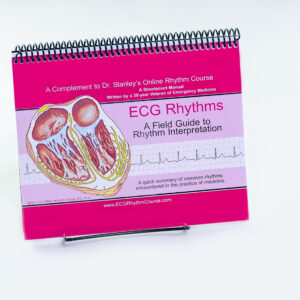 ECG Rhythms Field Guide Book$48.50
ECG Rhythms Field Guide Book$48.50 -
Sale Product on sale
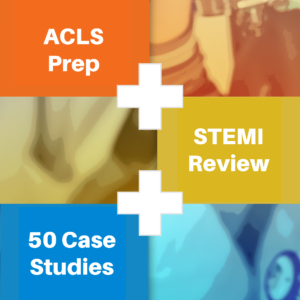 Starter Online ECG 3-course Suite (22 Hrs CME | ACLS Prep + STEMI + 50 Cases)
Starter Online ECG 3-course Suite (22 Hrs CME | ACLS Prep + STEMI + 50 Cases)$300.00Original price was: $300.00.$265.00Current price is: $265.00. -
Sale Product on sale
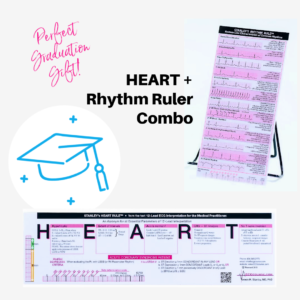 Cheat Sheet Combo Pack: HEART Mnemonic + ECG Rhythm Ruler
Cheat Sheet Combo Pack: HEART Mnemonic + ECG Rhythm Ruler$29.00Original price was: $29.00.$18.00Current price is: $18.00. -
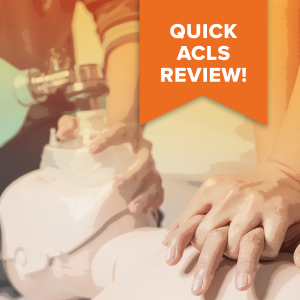 ACLS Prep Course (3 Hrs CME)$65.00
ACLS Prep Course (3 Hrs CME)$65.00 -
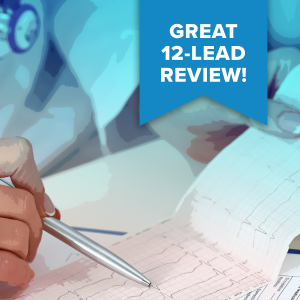 50 ECG Case Studies Course (13 Hrs CME)$145.00
50 ECG Case Studies Course (13 Hrs CME)$145.00 -
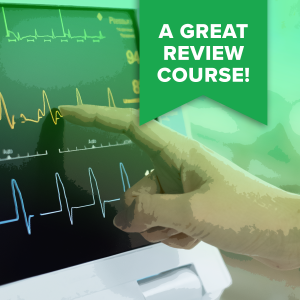 Animated ECG Rhythm Interpretation Course (9 Hrs CME/CE)$125.00
Animated ECG Rhythm Interpretation Course (9 Hrs CME/CE)$125.00

1 Response